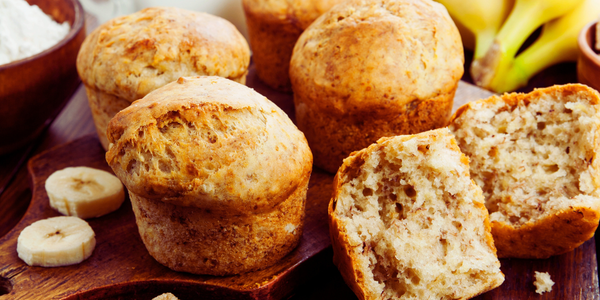7 Amazing Fiber-rich Foods and It's Health Benefits

Fiber-rich foods are an integral and essential part of a healthy and balanced diet. These are mostly originated from plant sources and are categorised under complex carbs.
A human body cannot digest the fibers due to the absence of the enzymes to digest the same. But still, it holds a very significant role in an individual’s health and well-being.
The dietary fibers are the polysaccharides of non- starchy, monomeric units like chitin, lignin, cellulose, oligosaccharides and beta-glucans. Based upon the water absorption capacity, these are divided into
- Soluble fibers- Which dissolves in water and forms a gel-like substance. Improves gut health by acting as prebiotics for the gut flora.
- Insoluble fibers- Doesn’t dissolve in water. Add bulk to the intestinal content and helps in easy defecation.
Recommended Dietary Allowance (RDA) of Fiber
The Institute of Medicine has recommended the daily dietary fiber intake, which is different for men and women.
| Age- 50 yrs or below | Age- 51 yrs or above | |
| Men | 38 grams | 30 grams |
| Women | 25 grams | 21 grams |
The health role of dietary fiber increases with the increase in age as problems like constipation and diverticular disease are very common among the old age people. Therefore, fiber intake should be encouraged to prevent the same.
Below is the list of 7 amazing sources of fiber-rich foods that should be included in a balanced plate for sound health.
7 Amazing Sources of Fiber-rich Foods
1. Black beans
The staple food of central and south America, black beans are a rich source of dietary fiber. According to the USDA Food Composition Database, 100 grams of black beans contains 8.70 grams of total dietary fiber.
Also known as turtle beans owing to its hard-shelled like appearance, these black beans are excellent in minerals like calcium, phosphorus, magnesium, and zinc.
It possesses many health benefits like
- Healthy bones
- Regulating blood pressure
- Lowering high levels of blood sugar
- Reducing blood cholesterol levels.
You can include them in various ways to your diet like salsa, dips, soups, burger, tacos, with stir-fry veggies and rice.
2. Sweet potatoes
Unlike common belief, sweet potatoes are a very good source of fiber. According to the USDA National Nutrient Database, a medium-sized baked sweet potato with skin has around 4 grams of dietary fiber.
Based on its starch digestibility, it has around 9 per cent slowly digested starch and 11 per cent resistant starch. It also contains some other important nutrients like beta carotene, vitamin E, potassium and manganese.
The consumption of sweet potato has shown many health benefits.
- Keep the gut healthy - The sweet potato has a high content of both soluble and insoluble fibers which are acted upon by the gut bacteria for fermentation. This process, further, releases short-chain fatty acids which are healthy for the intestinal lining.
- Control blood sugar and cholesterol level - Owing to high fiber content, sweet potato plays an important role in the prevention of spiked blood glucose and cholesterol level. Therefore, it helps in the prevention and healthy management of conditions like diabetes and CVDs.
- Boost immunity and reduce inflammation - Due to the high content of antioxidants like vitamin A and beta carotene, the consumption of sweet potato helps in the elimination of free radicals. This, in turn, reduces the chances of oxidative stress and inflammation while boosting the body’s immunity.
It can be added as baked sweet potatoes, baked fries and chips, in curries, no-sugar pies and stir-fried with veggies.
3. Whole grain-based food
The less processed grains are an excellent source of insoluble fibers. Major fiber is distributed along the bran portion which remains intact only in the whole, unrefined or less-refined grains.
| Food Items | Fiber content (grams per 100 grams) |
| Wheat flour, whole | 11.36 |
| Oats | 10.60 |
| Buckwheat flour | 10.00 |
| Wheat bulgur | 12.50 |
| Wheat, Semolina | 3.90 |
| Brown rice | 3.60 |
This fiber content along with the phytonutrients in whole grains bestows them therapeutic properties against metabolic disorders like diabetes, heart diseases and hypertension.
According to the meta-analysis published in the British Medical Journal, it was seen that the daily intake of up to 210-225 gm of whole-grain based food products like bread, healthy cereals and added bran was associated with reduced risk of CVDs and other mortality causing factors like cancer, infections, and diabetes.
You can prefer whole-grain based baked food items as well as whole grain or multi-grain flour for cooking at home.
4. Quinoa
Quinoa is one of the ancient grains with high nutritional and therapeutic properties. With no gluten in it, this pseudo-cereal is recommended for people having gluten sensitivity. According to the USDA food composition data, 100 grams of quinoa has around 7.00 grams of dietary fiber.
Moreover, it is one of the few grains having a complete protein profile with all the 9 essential amino acids required by the human body. It has a high content of minerals like iron, manganese and magnesium along with rich phytonutrients like quercetin and kaempferol.
Because of these reasons, quinoa exhibits excellent antioxidant capacity and is suggested to lower the complications of inflammation, chronic diseases, gluten intolerance and damage due to oxidative stress.
You can add quinoa in various ways like in salads, porridge, cutlets, one-bowl meal and stuffing in tacos.
5. Chia seeds
These are edible seeds of a flowering plant belonging to the mint family and are now, worldwide recognized as superfoods. According to the Harvard School of Public Health, 2 tablespoon of chia seeds (or 28 grams) contains around 11 gram of fibers.
Chia seeds assist in healthy weight loss and muscle building owing to its complete protein profile with all 9 essential amino acids along with high fiber content.
According to a study published in the Global Journal of Health Sciences, it was seen that the consumption of chia seeds has a positive impact on the learning and overall cognitive abilities of the subjects. This is because chia seeds have the highest amount of omega-3 fats among all the plant sources.
You can soak these seeds in a glass of water and include in various salads, desserts, smoothies and shakes.
6. Whole fruits and vegetables
When eaten whole, fruits and vegetables are the best and readily available sources of dietary fiber. Some of the high fiber-rich fruits and vegetables are mentioned in the table below
| Fiber-rich fruits | Fiber content (grams per 100 gram) |
| Custard apple | 5.10 |
| Sapota | 9.60 |
| Guava | 7.39 |
| Fiber-rich vegetables | |
| Broad beans | 8.63 |
| Corns, baby | 6.09 |
| Peas, fresh | 6.332 |
(Source- Indian Food Composition Tables)
The vibrant colours of fruits and vegetables not only make them appealing but also very healthy due to the rich content of phytonutrients. Together, these compounds and fibers bestow several health benefits including anti-inflammatory, preventing and correcting metabolic disorders, removing toxins and reducing oxidative stress and thenceforth, helps in weight loss.
7. Almonds
One of the most popular tree nuts, almonds is the powerhouse of many healthy components like vitamins, minerals, antioxidants, healthy fats like omega-3 fatty acids and unsaturated fats.
According to the Indian Food Composition Table, 100 grams of almonds contains around 13.06 grams of dietary fiber.
Moreover, the same portion of the almonds also contains around 18.41 gram of protein and 25.86 mg of Vitamin E. The high magnesium content of 318 mg helps in correcting and normalizing the blood sugar as well as blood pressure level.
To add on to its health benefits, the unsaturated fats in almonds are extremely healthy which assists in healthy brain development and functioning as well as preventing cardiovascular diseases by lowering the cholesterol levels.
According to a study published in the Journal of American Heart Association, it was seen that the administration of 1.5oz almonds per day resulted in the decreased level of non-HDL and LDL- cholesterol level along with an overall reduction in the abdominal and leg fat.

Health Benefits of Dietary Fiber
1. Controls blood sugar level
It is seen that a fiber-rich diet helps in lowering the overall glycemic index. The soluble fibers tend to form gel-like consistency that slows down the enzymatic action on the degradation of the carbs molecules and ultimately, reduces the sugar absorption into the bloodstream.
2. Protects from heart-related complications
The soluble fibers help in lowering the blood cholesterol levels. The underlying mechanism is that these fibers absorb cholesterol from the intestinal area in the form of bile salts and pure cholesterol particles.
As a result, the majority of the cholesterol and bile salts are excreted without getting much absorbed.
3. Reduces hypertension
Due to the potential effect of fibers on lowering the fat percentage in the body, its accumulation in the blood vessels is also reduced. This, in turn, lessens the obstacles in the blood flow leading to normal blood pressure.
Ensures healthy gut
Unlike other nutrients, fibers do not get digested and that is a plus point when it comes to having an intact and healthy gut. The soluble dietary fibers act as prebiotics for the gut flora, resulting in the production of beneficial short-chain fatty acids like acetate and butyrate.
These compounds keep the colon healthy and improve the conditions of digestive disorders like IBS, inflammation etc.
- Assist in weight loss - Dietary fibers have high satiety value providing the feeling of fullness when included in the diet. This results in suppressed appetite and overall reduced calorie intake. Therefore, fiber-rich foods should be consumed with every meal to lose weight healthily.
The consumption of fiber-rich foods is not only necessary for losing weight but also if you want to gain health. Make sure to include more natural sources of dietary fiber to remain fit and keep diseases at bay.
About Dr Swati Shukla Doctorate in Food Science and Nutrition, an enthusiast writer in academic and scholarly articles and papers. She is a Gold medalist, National Scholarship holder, UGC qualified and a lifetime member of IDA and NSI, India. She holds expertise in public speaking, nutrition consultation with over 5 years of experience in research and analysis.
Sign up for FD's newsletter
The freshest stories from the food and dating world every week.




